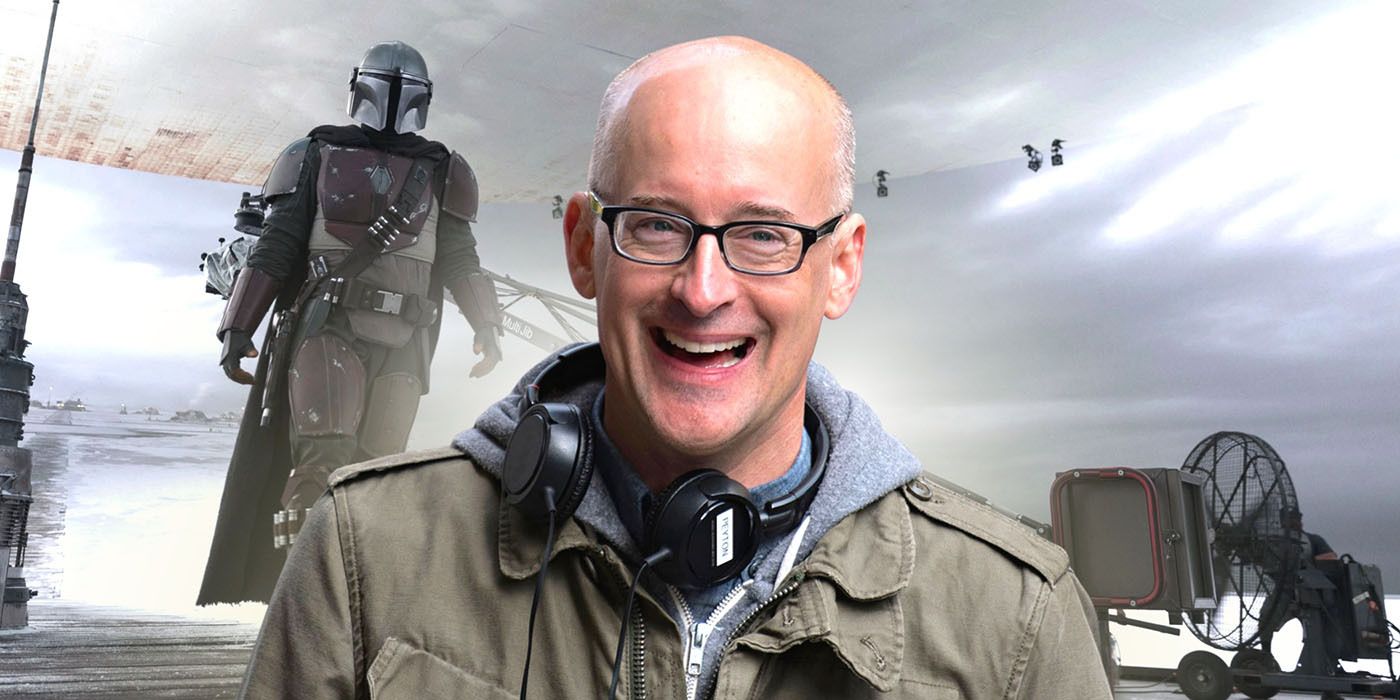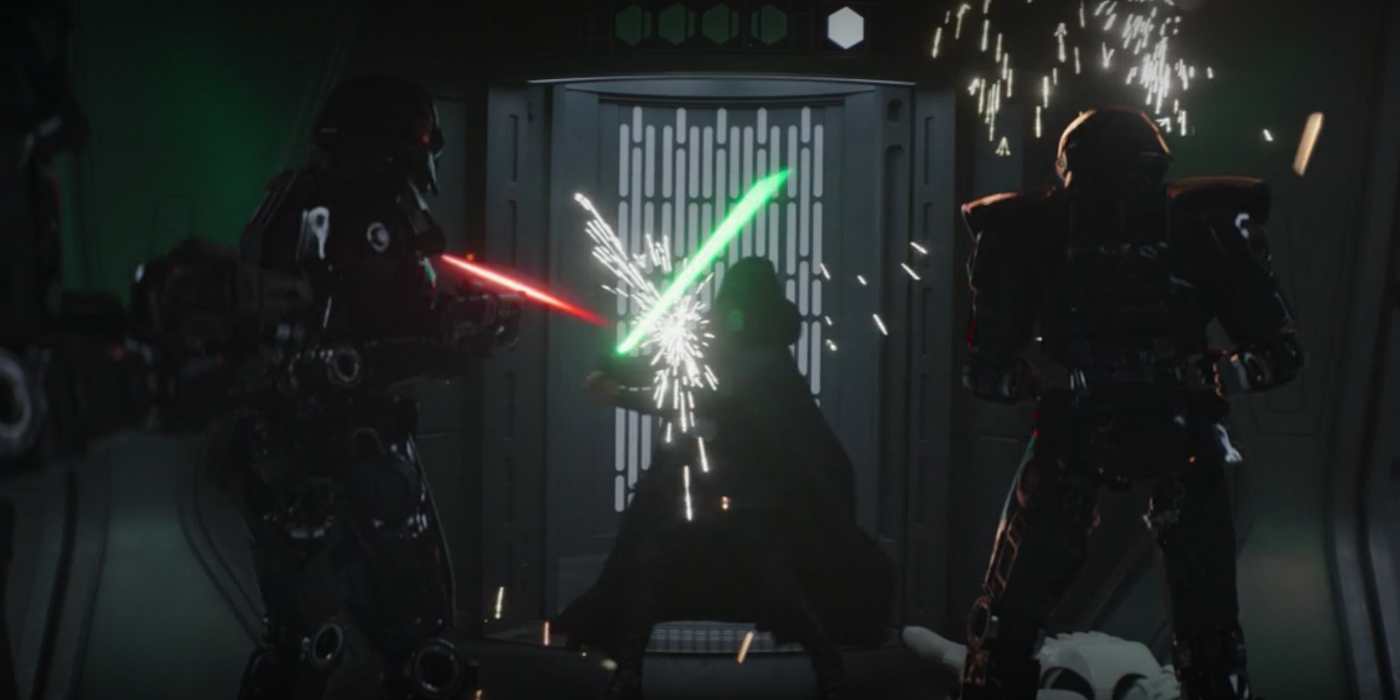Award-winning director Peyton Reed is about to show the fruits of his jump into the Quantum Realm with Ant-Man and the Wasp: Quantumania releasing this week. The film will see Scott Lang (Paul Rudd) and Hope van Dyne (Evangeline Lilly) travel to a world they've never known to face off against Kang the Conqueror (Jonathan Majors) in what Rudd has teased will be a very uneven bout. Before he returned to directing Marvel's tiniest hero, however, Reed joined the team of The Mandalorian to direct two episodes in Season 2. During an interview for Quantumania, Collider's own Steve Weintraub asked Reed about the experience of directing the Star Wars show and utilizing the Volume technology he would come to employ with Marvel.
Reed's initial interest in The Mandalorian was in part because of the state-of-the-art technology used in the production. "I had gone down to visit [Jon] Favreau on the set of Season 1 Mandalorian because everyone was talking about the Volume technology," he said. The Volume is Industrial Light and Magic's inventive 360-degree sound stage that first came into play with Season 1 of the series, and uses seamless LED screens to digitally alter the background in real-time while filming through Stagecraft. Reed's love for the show extended beyond the high-tech production, however. "I love Star Wars and I love Favreau, so when Season 2 came about Jon called and said, 'Would you like to come down and do an episode?' I was like, “Yeah, absolutely.” It was the second episode of Season 2 that I originally signed on for, and Jon had written a rough script, and then I fleshed the script out, and we worked on it together."
"The Passenger," Reed's episode, follows the titular Mandalorian (Pedro Pascal/Brendan Wayne) on his hunt for information on other Mandalorians with the help of a passenger, known only as Frog Lady, who needs transport to Trask. Their trip doesn't go as planned, however, and they end up under attack by the spider-like Krykna in the process. Reed explained they were thrilled enough to ask him back for the finale and, once he heard their plans, it was an offer he could refuse. He added:
Then that was the first one we shot for Season 2. It wasn't the first episode aired, but it was the second episode. It was the first one we shot and they were psyched about it, and they had this finale coming up, which all he said was, “There's going to be sort of a big swing in the finale.” I was like, “What you got going on?” And he said it's going to be a very emotional episode and then he talked me through what it was about, and I read the script, and I was like, “Absolutely, I'm doing this.” We already started working on the script and formulating Quantumania, but it was still early on and we had time, and I was like, “I cannot pass up this chance.”
Obviously, Season 2's finale was going to be massive with the surprise return of Mark Hamil as Luke Skywalker, albeit significantly de-aged for the occasion. It left the series with a major cliffhanger ahead of The Book of Boba Fett and the eventual Season 3 due out on March 1. It seems Reed was more than happy to play such an important role in what has been one of Disney's biggest hit series so far.
Quantumania Wasn't as Suited for Volume Technology as The Mandalorian
Beyond loving the experience of working on The Mandalorian, it was also valuable for Reed to get to know Volume technology ahead of Quantumania. "Well, it was the technology I wanted to know about, right? I wanted to see how it worked and how it could be applied," he told Weintraub. "So I didn't necessarily specifically think, but it was definitely in the back of my mind, 'We're going to do Quantumania and we have to render the Quantum Realm vividly.' There were things that I wanted to do, but I wasn't sure that the Volume technology was ready for it."
The problem was the Quantum Realm Reed envisioned was so expansive that Volume technology wasn't able to handle it alone. Trailers have revealed a realm filled with otherworldly landscapes that play with the concept of what could appear in such a space, from massive structures to dream-like battlefields with hundreds of Ant-Men. The Volume and Stagecraft were certainly going to be useful, but Reed says when compared to The Mandalorian, Quantumania was simply going to require far more space than it could reasonably film:
What was great about The Mandalorian is, shooting these great location backdrops and then putting them up there, and it feels very photo-real, but we were [going to] be creating digital backdrops – some based on real photography – but it was a different thing altogether. We also wanted a lot of movement within those screens. We ended up using the Volume technology, [and] it was great for certain environments, but not necessarily right for other ones. There's also just size and shape. Sometimes our sets are too big for the Volume, so we would use partial sets. So it was definitely one of the tools we used in our toolkit, and the actors love it because they get to see a version of what they're [going to] see in the movie. The interactive lighting is obviously great, but it's great, the actors love it. It's not always the right tool, but I liked it because we wanted to create all these different parts of the Quantum Realm that had to look and feel differently. So it was cool to have some that were and some that weren't.
Ant-Man and the Wasp: Quantumania kicks off Phase 5 of the MCU on February 17. Check out the trailer below and keep an eye out for the full interview with Reed here on Collider.


